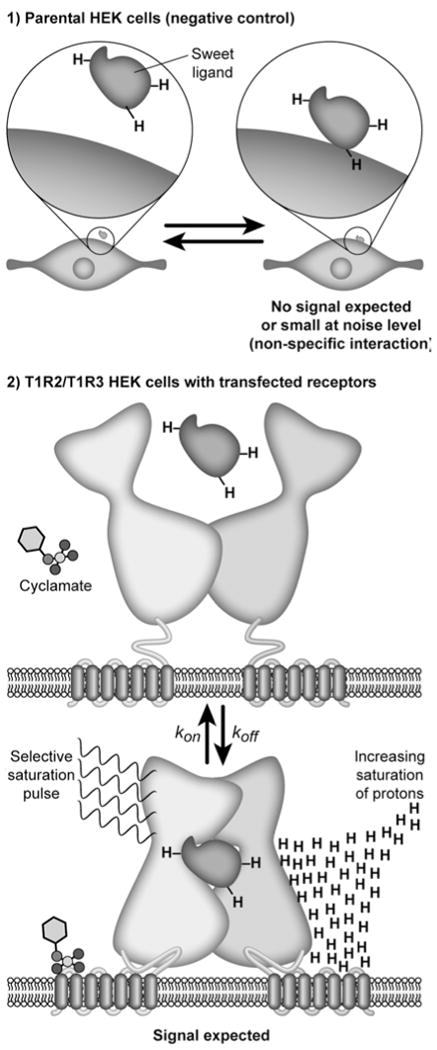Fig. 1.

Schematic illustrating the use of STD NMR for monitoring binding interactions of non-expressing cells and cell-expressed receptors (2): (1) negative control: due to possible nonspecific binding of ligand to parental membrane background parental cells that are not transfected and do not contain receptor of interest, e.g., parental HEK cells, are used for preparing membranes from these cells as negative control membranes; (2) ligand binding to the sweet receptor is expected for T1R2/T1R3 transfected HEK cells where the receptors are expressed and displayed leading to STD signals. STD signals depend on both equilibrium constants (kon/koff rates), which describe kinetic interactions between ligand and receptor. A selective saturation NMR pulse is applied to the receptor to transfer magnetization from receptor through spin diffusion to the nearby (bound) ligand (bottom). Effects are detected as STD signals on the pool of free ligands by rapid exchange of the saturation transfer only if binding occurs.
